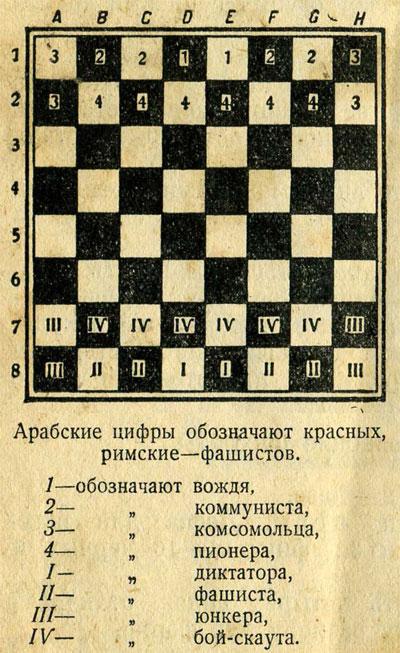
"Komsomol Chess": an obscure Soviet chess variant
While reading a huge book about Russian kids' games, I came across two Soviet variants of chess that were introduced in mid-1920s. One of them ("International", developed by Alexander Ilyin-Zhenevsky, among others) had rules more akin to modern tabletop strategies (a complex three-way chesslike game where two players more or less played a normal game of chess, while the third player tried to infiltrate one or both camps and incite a "revolution" among the ranks), but the other ("Komsomol Chess") was very simple and seemingly even fun to play.
The purpose of the game was, as customary at the time, "political education" of kids. The game was contested between "Communists" and "Fascists", with four kinds of pieces:
Leader (Communists) or Dictator (Fascists) moves like a Queen.
Communist or Fascist (self-explanatory) moves like a Rook.
Komsomolets (Communists) or Junker (Fascists) moves like a Bishop.
Young Pioneer (Communists) or Boy Scout (Fascists) moves like a pawn, but can also capture one square forward.
If a pawn reached the 8th (or 1st) rank, it could promote, but only to a Bishop.
The goal of the game is simple: capture all the opponent's pieces.
Ideological part aside, I think it might be a really fun variant to play, especially for children - to teach them basics of most chess moves (with exception of knights) without having them worry about being checkmated.